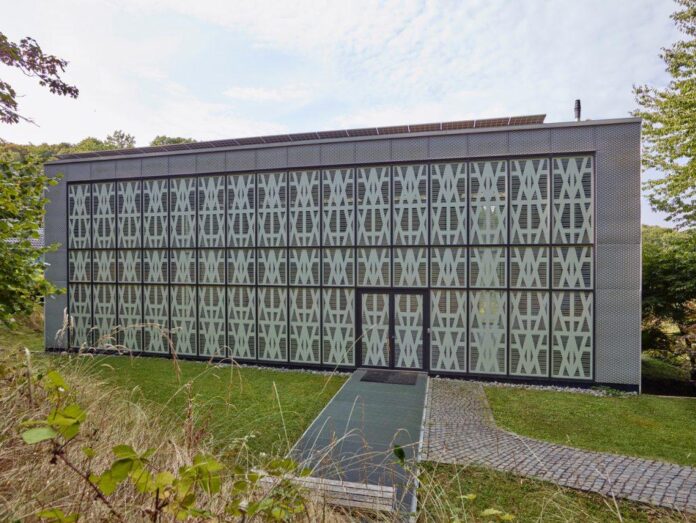About the Artist: German artist Bettina Pousttchi (b. 1971) lives and works in Berlin and employs a wide range of media in her practice—but has garnered significant attention for her photography and sculpture. Much of her work centers on site-specific photographic installations that are frequently monumental in size, like her 2009 piece , which covered four elevations of the Temporäre Kunsthalle at Berlin’s Schlossplatz. Her works that are not physically large in scale still tend to be massive in scope, such as her “World Time Clock” series from 2016. For this series, Pousttchi spent several years traveling the world, taking photographs of 24 public clocks in 24 different time zones when they read the exact same time: 1:55 p.m. The photos together illustrated what the artist referred to as an “imaginary global synchronism.”
What You Need to Know: Represented by Buchmann Galerie, Berlin, Pousttchi’s recent work is on view at the Skulpturenpark Waldfrieden in Wuppertal, Germany. For this project, Pousttchi created a photographic installation that enrobes the entirety of the facades of the sculpture park’s lower exhibition hall with a white pattern punctuated by transparent gaps. The specific pattern was inspired by photos Pousttchi took of timber-framed houses typically found in regions of Europe and the near East. Starting with these photos, she modified the pattern into a design that is truly her own. The result is a complete transformation of the site, turning the building into a sculptural art object in and of itself. The exhibition of runs partly concurrently with , an installation on the roof terrace of the Bundeskunsthalle Bonn, which is on view through October 29, 2023.
Why We Like It: The effect of Pousttchi’s intervention in is multilayered. It conveys a sense of changed architecture, even though the artist’s additions are purely visual and not structural. Similar to architecture too, the bold white pattern stretching across the facades alters the way that a viewer can see into or out of the building, as well as how light is blocked or allowed to flood the interior. This alternation between transparency and opacity in the weave of the superimposed pattern emulates how the surrounding light conditions and landscape change with the seasons over the course of the exhibition—creating a dynamic and shifting experience for those who move past and through the building. Lastly, it engages with the aesthetics of space. The original timber-frame designs for can still be sensed, but the alterations are significant enough that they can’t quite be placed, encouraging questions and reflection on the relationship between place and visual culture.
See installation views as well as past works by the artist below.

Installation view of Bettina Pousttchi, (2022). Photo: Michael Richter. Courtesy of Buchmann Galerie, Berlin.

Installation view detail of Bettina Pousttchi, (2022). Photo: Michael Richter. Courtesy of Buchmann Galerie, Berlin.

Interior installation view of Bettina Pousttchi, (2022). Photo: Michael Richter. Courtesy of Buchmann Galerie, Berlin.

Interior installation view of Bettina Pousttchi, (2022). Photo: Michael Richter. Courtesy of Buchmann Galerie, Berlin.

























